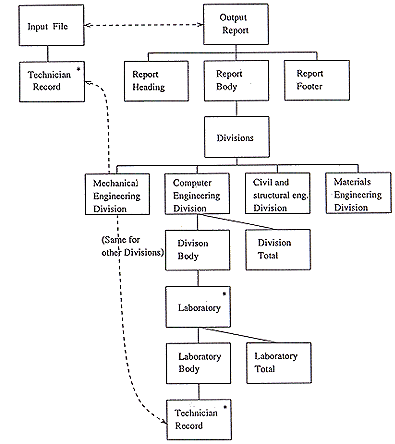| (a) | The following is an
example of a design heuristic: Keep the scope of effect of a module within the scope of control of that module. Describe in your own words what this design heuristic means, and explain why it is a good idea to implement such a heuristic. You should make use of diagrams to illustrate your discussion. |
[3] |
| The
scope of effect of a module refers to the range of modules that can be affected by some
decision made in a module, as compared to the scope of control, which refers to the
subordinate modules under that of the module making the decision. Logically, we should not
be able to affect objects that are not beyond our control, i.e. outside our scope of
control. Hence, if a module is to be able only to affect objects within its control, these
objects must be subordinate to that module, i.e. within the scope of control.
|
||
| (b) | The Faculty of Engineering at the
Gotham State University is made up of four different divisions: the Medical Engineering
Division; the Chemical Engineering Division; the Computer Engineering Division; and the
Civil and Structural Engineering Division. There are multiple laboratories in each
Division, and multiple technicians could work in each laboratory at any time. The database
used by the Faculty contains an unsorted file of records of these laboratory technicians. A program is required to do the following: print out a report - sorted by laboratory within division - detailing the names of technicians in each laboratory. The report should also print out the total number of technicians in each laboratory, and the total number of technicians in each division.
|
|
| (i) Based on the scenario above, draw both the input and output data structures for the system, making use of Jackson's notation. | [13] | |
| (ii) Identify any possible points of correspondence. | [2] | |
|
||
| (iii) Jackson Structured Programming belongs to a broad category of design methods known as Data-Oriented Design Methods. Identify two application areas of this particular design method. | [2] | |
|
